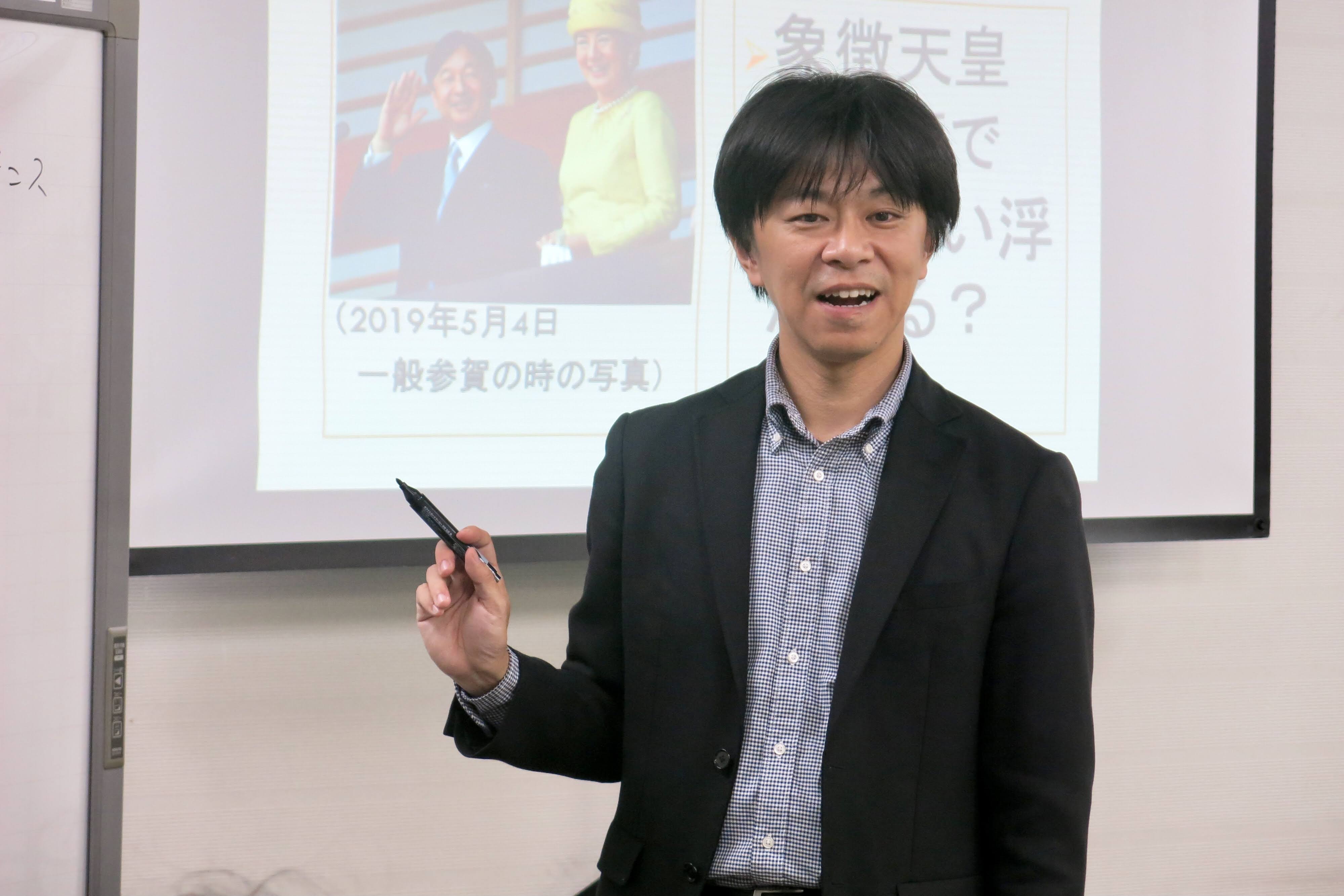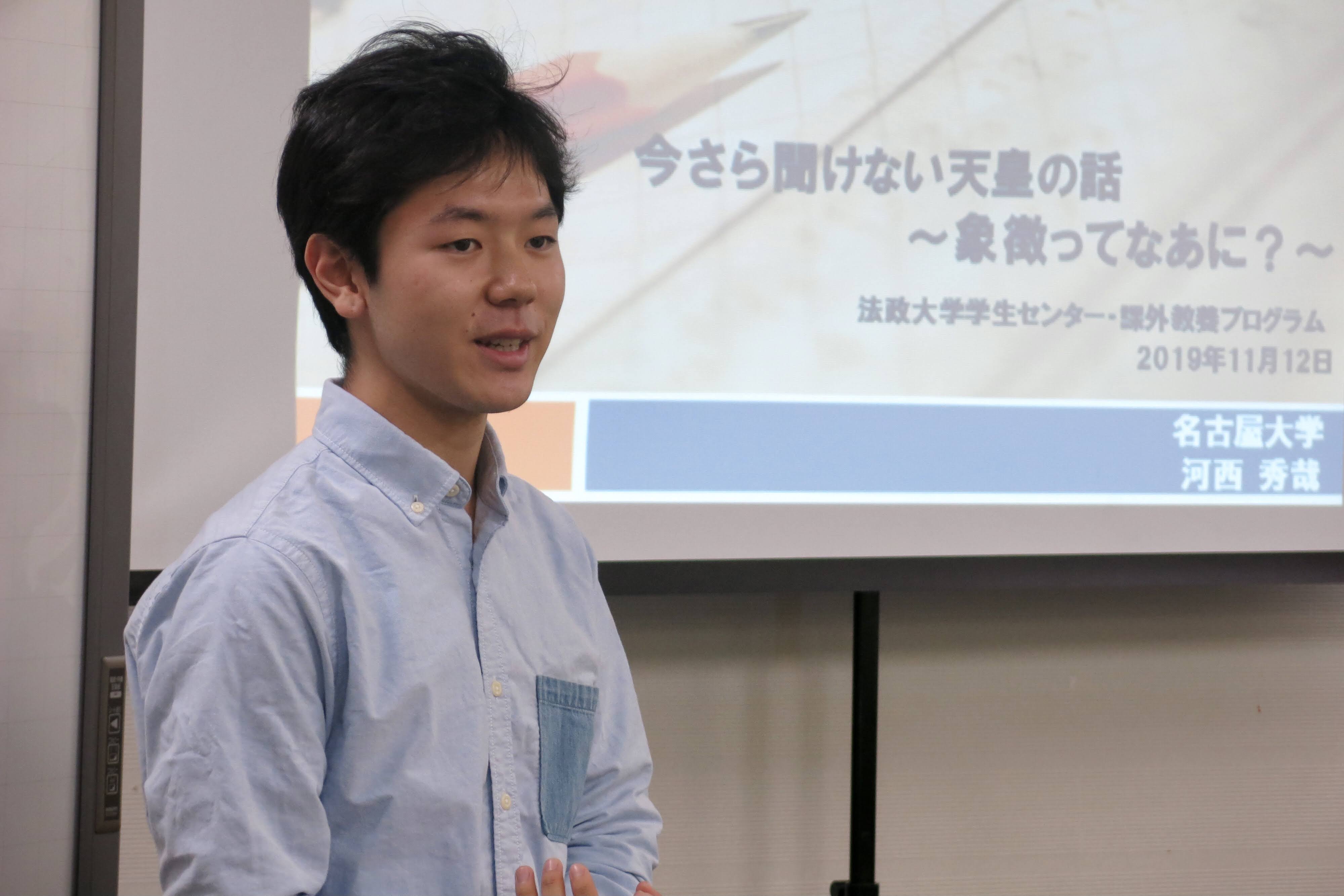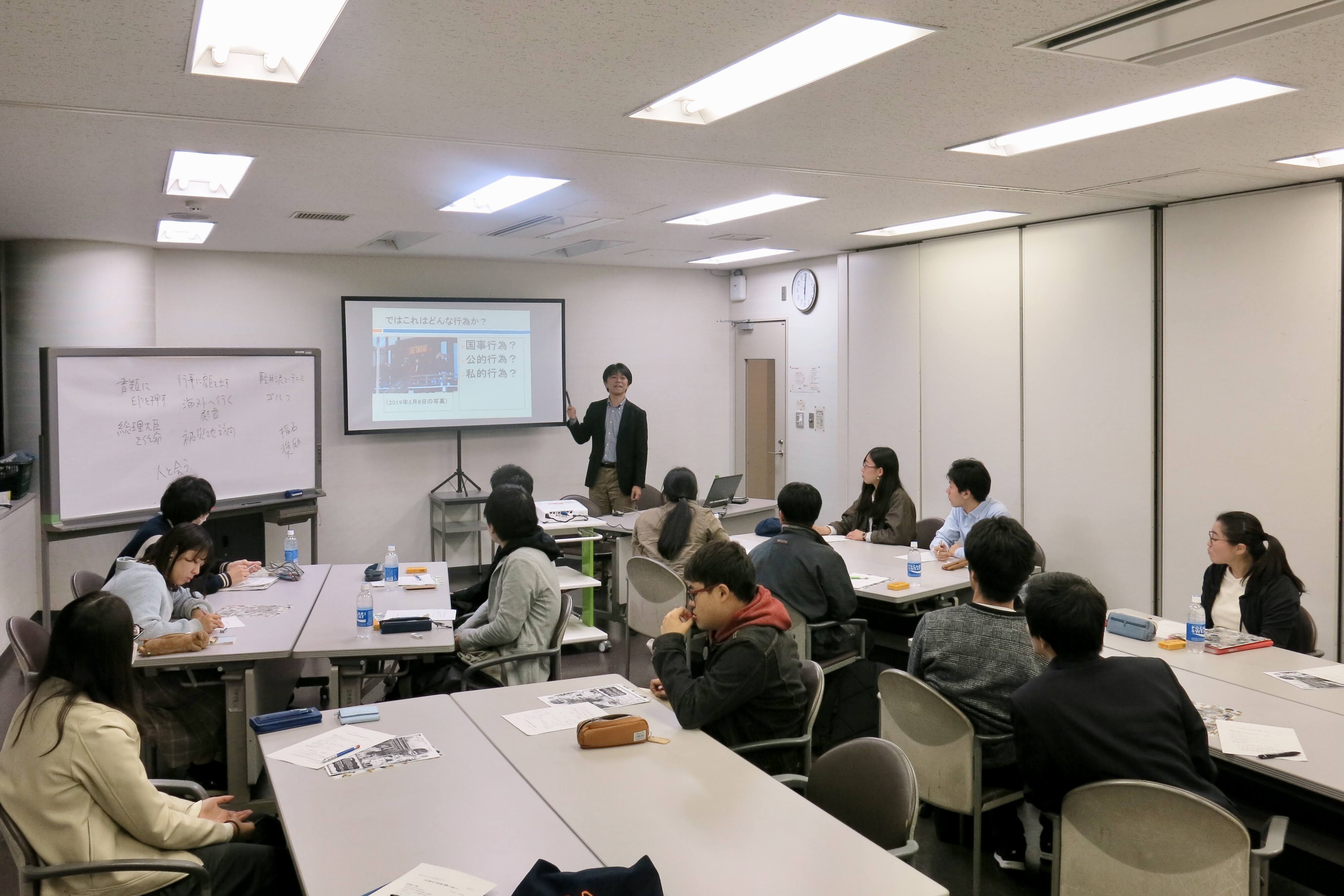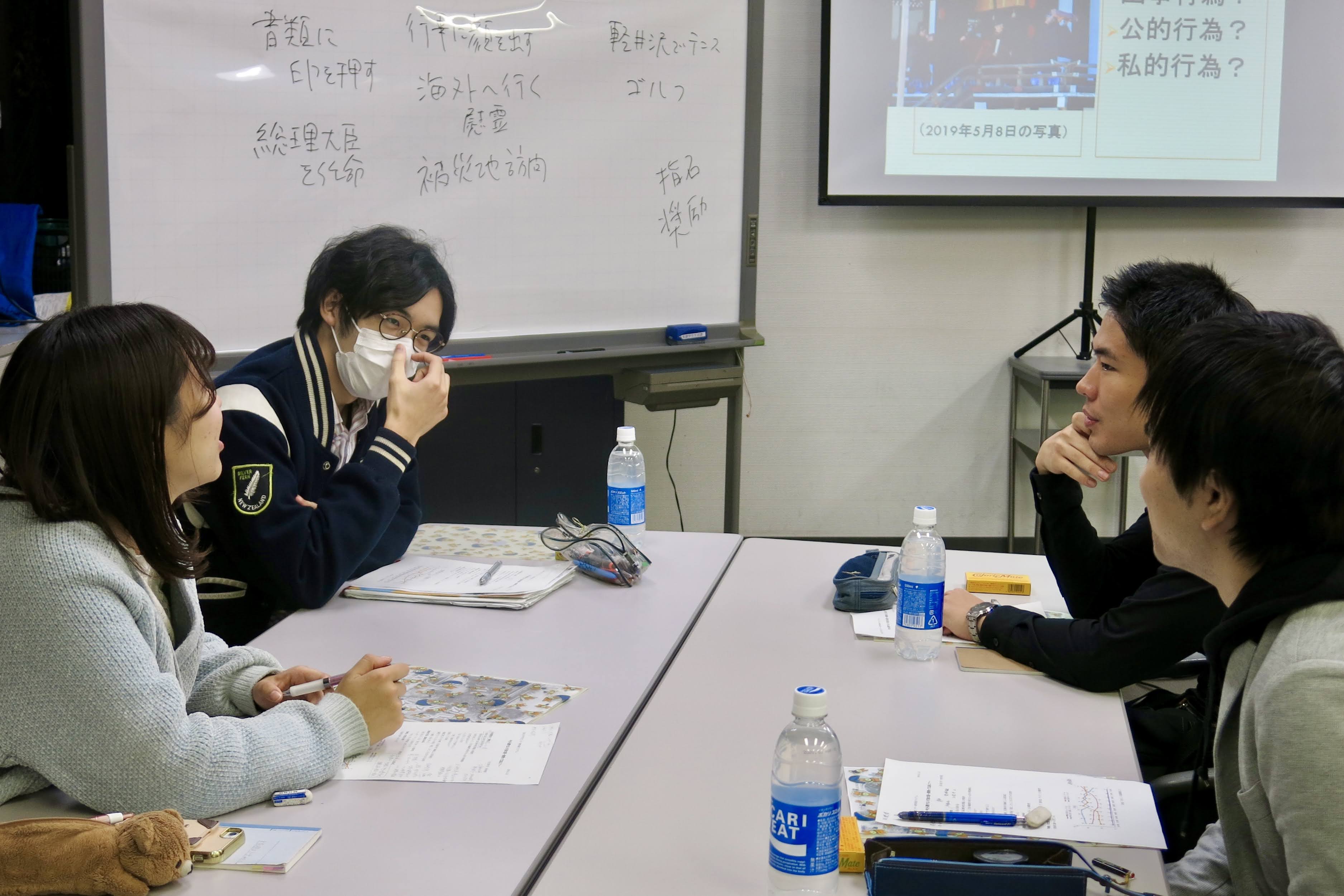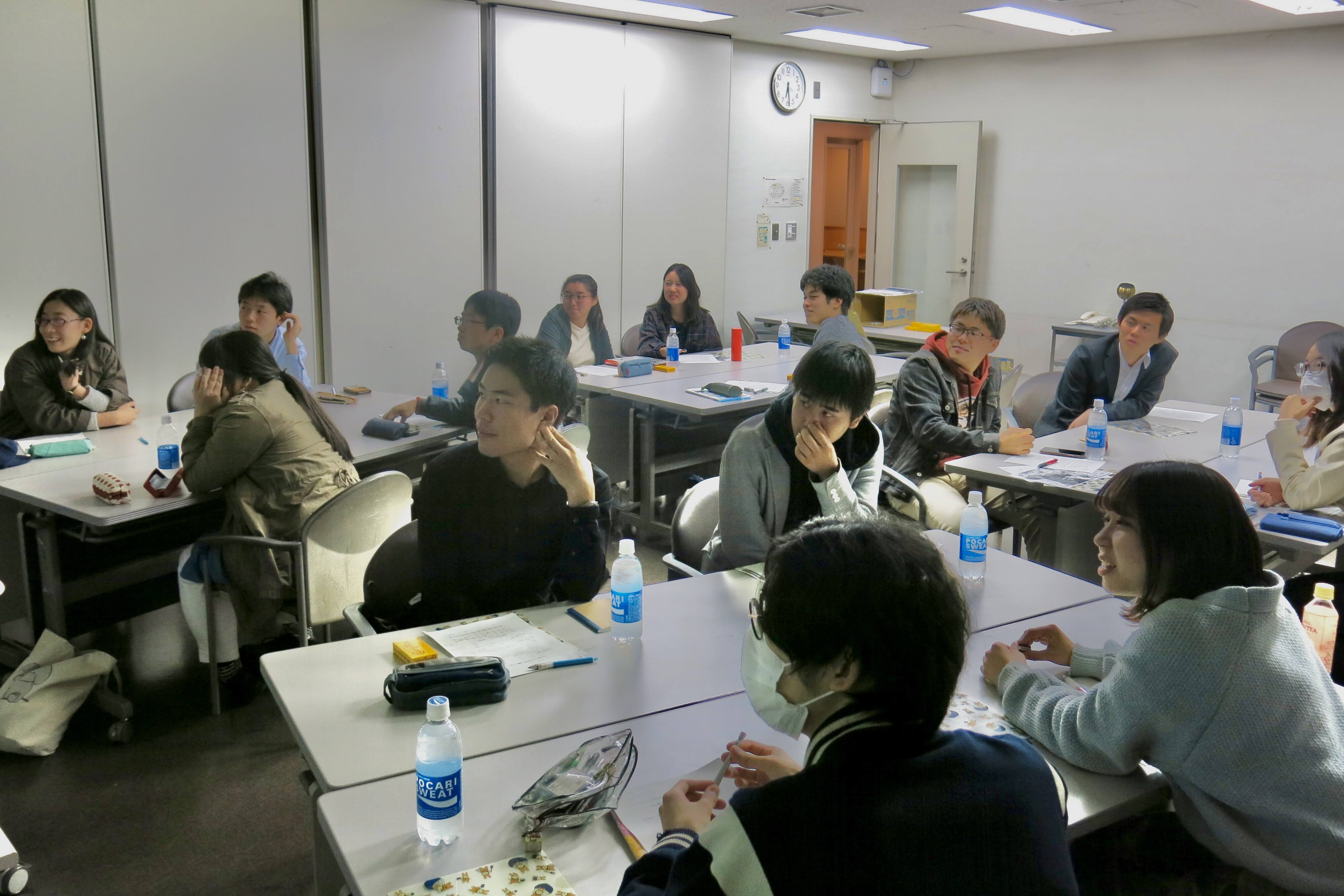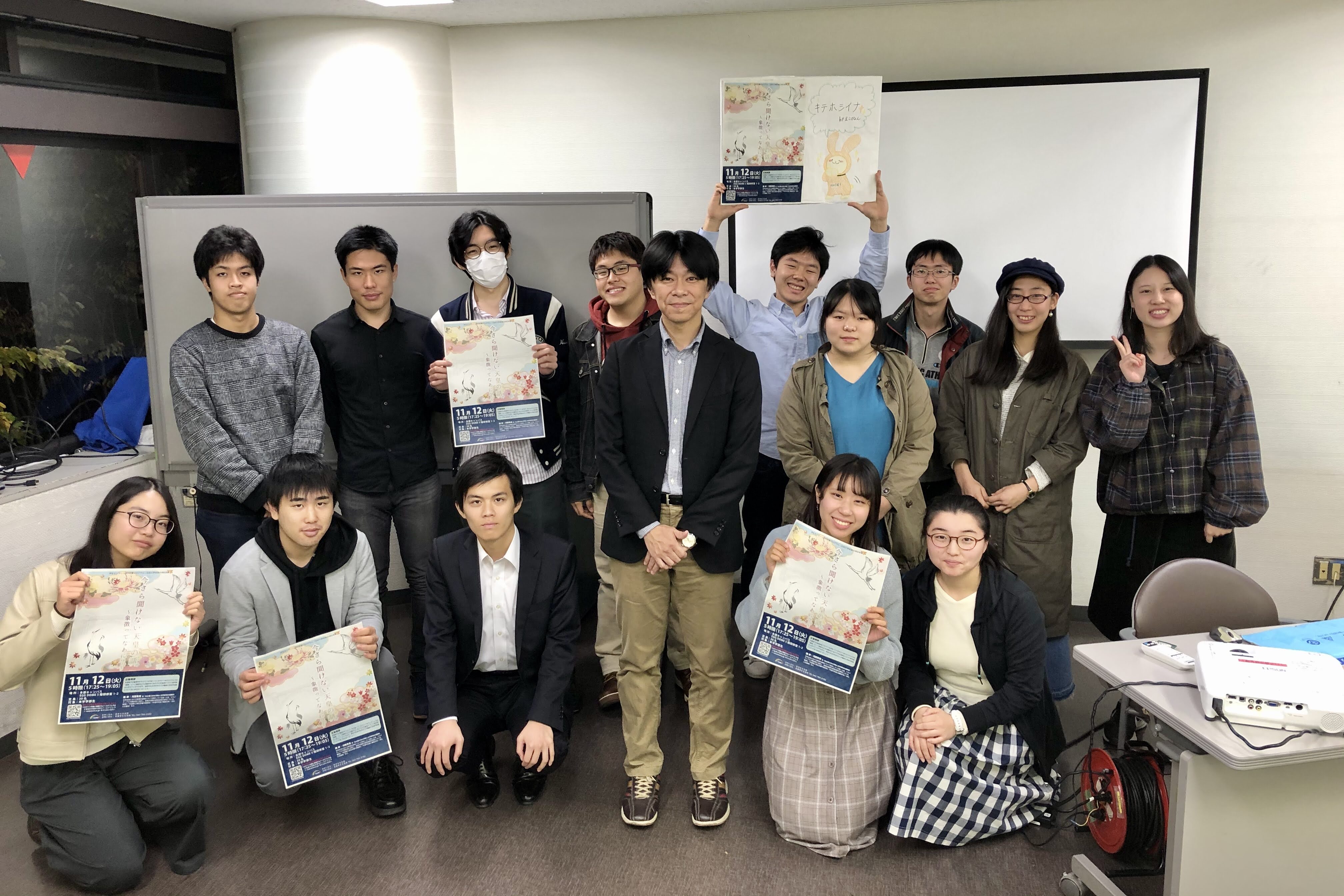Academic Year 2019
The Emperor: What is a Symbol? ~What is a symbol?
November 12, 2019
Academic Year 2019Hosei University Student Center, Extracurricular Education Program (Hosei University Supporters' Association Support Program)
1. date and time
Tuesday, November 12, 2019, 17:25-19:05
2. Place
EGG DOME, Tama Campus Training Room 1 & 2
3.Number of participants
11 persons
4. Lecturer
Hideya Kawanishi (Associate Professor, Graduate School of Humanities, Nagoya University)
Report by KYOPRO Staff
On Tuesday, November 12, 2019, the Extracurricular Education Program "The Emperor: What is a Symbol? ~was held on Tuesday, November 12, 2019. This program was held with the aim of providing an opportunity to learn about the Emperor, a position unique to Japan, the symbolic emperor system, which is also a unique system, and the Emperor's work and daily life, and to reconsider our country, Japan, in this year when Emperor Tokujin assumed the throne and the era name was changed to 2025.
The program featured Dr. Hideya Kawanishi, Associate Professor of Nagoya University Graduate School, as the invited lecturer. Dr. Kawanishi has been studying the process of transformation of the symbolic emperor system, focusing his analysis on the relationship with the prewar emperor system and the thoughts and actions of Emperor Akihito and Empress Michiko. This time, he gave a lecture on the current symbolic emperor system while touching on the daily life of the Imperial Family, especially for students who have limited knowledge about the Emperor.
On the day of the program, the lecture focused on two main topics: the Emperor's daily duties and how the current symbolic emperor system was formed. The Emperor's duties, which are categorized as "official duties," are broadly classified into three types: "state affairs," "official acts," and "private acts," and the current news on the recent "Accession Ceremony," "Celebration Procession," and "Great Tasting Ceremony" fell into one of these categories. He also explained in depth about the research that His Majesty the Emperor is personally carrying out. He also talked about the establishment of the symbolic emperor system, the way the Imperial Family has been reported since immediately after the accession of Emperor Akihito and Empress Michiko to the throne, and how the current symbolic emperor system has been formed and how it will be formed in the future, using the Emperor and the people as subjects in his search for a symbolic emperor system. He talked about how the current symbolic emperor system was formed and how it will be formed in the future. During the lecture, the professor gave several quiz-style questions on the Emperor, ranging from simple group questions on the meaning of words to questions on the appearance of pictures in past newspaper articles, which led to lively discussions in each group, with some surprising answers coming out. The quizzes led to lively discussions among the groups, and sometimes the answers were surprising.
We hope that this program will help students to think for themselves about what kind of country Japan is and how Japanese traditional institutions should be.
Report by KYOPRO staff member] Minegishi, Tatsuru (2nd year, Department of EconomicsFaculty of Economics )


